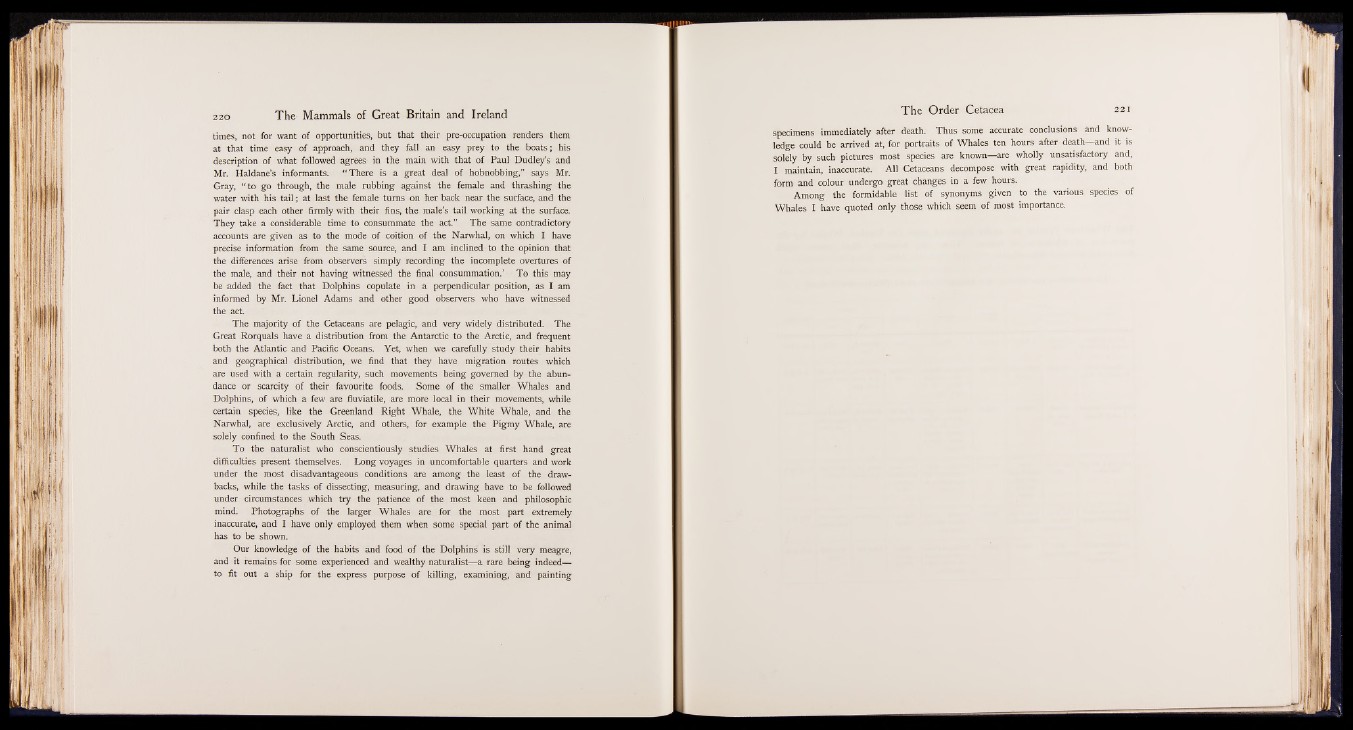
times, not for want of opportunities, but that their pre-occupation renders them
at that time easy of approach, and they fall an easy prey to the boats; his
description of what followed agrees in the main with that of Paul Dudley’s and
Mr. Haldane’s informants. “ There is a great deal of hobnobbing,” says Mr.
Gray, “ to go through, the male rubbing against the female and thrashing the
water with his ta il; at last the female turns on her back near the surface, and the
pair clasp each other firmly with their fins, the male’s tail working at the surface.
They take a considerable time to consummate the act.” The same contradictory
accounts are given as to the mode of coition of the Narwhal, on which I have
precise information from the same source, and I am inclined to the opinion that
the differences arise from observers simply recording the incomplete overtures of
the male, and their not having witnessed the final consummation.’ To this may
be added the fact that Dolphins copulate in a perpendicular position, as I am
informed by Mr. Lionel Adams and other good observers who have witnessed
the act.
The majority of the Cetaceans are pelagic, and very widely distributed. The
Great Rorquals have a distribution from the Antarctic to the Arctic, and frequent
both the Atlantic and Pacific Oceans. Yet, when we carefully study their habits
and geographical distribution, we find that they have migration routes which
are used with a certain regularity, such movements being governed by the abundance
or scarcity of their favourite foods. Some of the smaller Whales and
Dolphins, of which a few are fluviatile, are more local in their movements, while
certain species, like the Greenland Right Whale, the White Whale, and the
Narwhal, are exclusively Arctic, and others, for example the Pigmy Whale, are
solely confined to the South Seas.
To the naturalist who conscientiously studies Whales at first hand great
difficulties present themselves. Long voyages in uncomfortable quarters and work
under the most disadvantageous conditions are among the least of the drawbacks,
while the tasks of dissecting, measuring, and drawing have to be followed
under circumstances which try the patience of the most keen and philosophic
mind. Photographs of the larger Whales are for the most part extremely
inaccurate, and I have only employed them when some special part of the animal
has to be shown.
Our knowledge of the habits and food of the Dolphins is still very meagre,
and it remains for some experienced and wealthy naturalist— a rare being indeed—
to fit out a ship for the express purpose of killing, examining, and painting
specimens immediately after death. Thus some accurate conclusions and knowledge
could be arrived at, for portraits of Whales ten hours after death— and it is
solely by such pictures most species are known— are wholly unsatisfactory and,
I maintain, inaccurate. All Cetaceans decompose with great rapidity, and both
form and colour undergo great changes in a few hours.
Among the formidable list of synonyms given to the various species of
Whales I have quoted only those which seem of most importance.